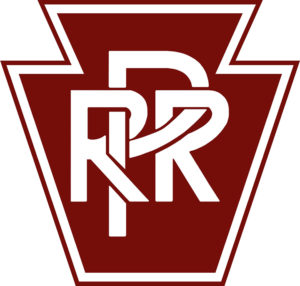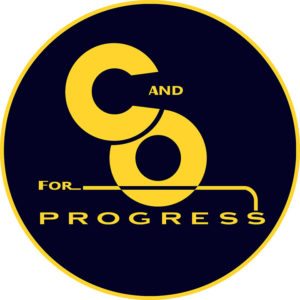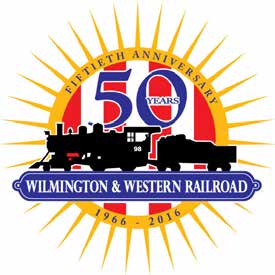OWNED BY A COMPETITOR
 Opened in October 1872, the Wilmington & Western Rail Road flourished for several years before falling to receivership and being reorganized as the Delaware Western Railroad. The Delaware Western was purchased by the Baltimore & Ohio Railroad (B&O) in March 1881 as a means to enable additional tracks to be laid in Delaware. Today, what remains of the original 19.7-mile route still connects Marshallton and Hockessin (originally connected Wilmington, DE with Landenberg, PA). In 1888, renamed as the Landenberg Branch of the B&O, the line once displaying Delaware Western on the locomotives, freight and passenger cars, now displayed B&O livery.
Opened in October 1872, the Wilmington & Western Rail Road flourished for several years before falling to receivership and being reorganized as the Delaware Western Railroad. The Delaware Western was purchased by the Baltimore & Ohio Railroad (B&O) in March 1881 as a means to enable additional tracks to be laid in Delaware. Today, what remains of the original 19.7-mile route still connects Marshallton and Hockessin (originally connected Wilmington, DE with Landenberg, PA). In 1888, renamed as the Landenberg Branch of the B&O, the line once displaying Delaware Western on the locomotives, freight and passenger cars, now displayed B&O livery.
 By 1890, the B&O was in financial trouble due to the rate structure of freight operations even though the railroad made generous profit on passenger operations. The B&O sold their telegraph service to Western Union, express freight operations to United States Express Company, and their sleeping car equipment and franchises to Pullman Company as a means to show annual profits to the stockholders. By the late 1890s,the financial tricks to keep the railroad solvent were exhausted and reorganization without foreclosure was actively considered. Bankruptcy occurred in 1896. Reorganization allowed the B&O by the early 1900s to appear very successful once again. In the mid-1930s the B&O maintained more than 6,300 miles of track and advertised itself as “Linking 13 Great States with the Nation.”
By 1890, the B&O was in financial trouble due to the rate structure of freight operations even though the railroad made generous profit on passenger operations. The B&O sold their telegraph service to Western Union, express freight operations to United States Express Company, and their sleeping car equipment and franchises to Pullman Company as a means to show annual profits to the stockholders. By the late 1890s,the financial tricks to keep the railroad solvent were exhausted and reorganization without foreclosure was actively considered. Bankruptcy occurred in 1896. Reorganization allowed the B&O by the early 1900s to appear very successful once again. In the mid-1930s the B&O maintained more than 6,300 miles of track and advertised itself as “Linking 13 Great States with the Nation.”
Another railroad took control of the B&O during the 1896 bankruptcy period just mentioned. Which railroad took a majority stock interest in the B&O during this reorganization?
Answer
 The Baltimore & Ohio Railroad, the nation’s first common carrier railroad, and at the time the nation’s oldest railroad, sold more than half the outstanding shares of common and preferred stock to the Pennsylvania Railroad (PRR), one of the B&O’s strongest competitors, to help finance the reorganization effort. As a result, when the B&O exited reorganization, it could be argued that the PRR effectively ‘owned’ the B&O although the PRR chose not to push the situation because of increasing antitrust investigations underway by the U.S. Government. The PRR chose to seat five individuals on the B&O Board but let the railroad maintain its independence of operations and management as the B&O. Because of government antitrust actions, in 1906 the PRR divested its controlling interest in the B&O by selling shares to Union Pacific and other railroads and investors.
The Baltimore & Ohio Railroad, the nation’s first common carrier railroad, and at the time the nation’s oldest railroad, sold more than half the outstanding shares of common and preferred stock to the Pennsylvania Railroad (PRR), one of the B&O’s strongest competitors, to help finance the reorganization effort. As a result, when the B&O exited reorganization, it could be argued that the PRR effectively ‘owned’ the B&O although the PRR chose not to push the situation because of increasing antitrust investigations underway by the U.S. Government. The PRR chose to seat five individuals on the B&O Board but let the railroad maintain its independence of operations and management as the B&O. Because of government antitrust actions, in 1906 the PRR divested its controlling interest in the B&O by selling shares to Union Pacific and other railroads and investors.
 From the 1930s into the 1970s, all of the nation’s railroads experienced a slow decline in passenger ridership and freight tons carried per mile. While the Great Depression saw a heavy decline of railroad traffic in general and a number of bankruptcies, the automobile and trucking industry contributed to the continued degradation of the nation’s passenger and freight railroads. By the early 1960s few railroads in the U.S. remained profitable.
From the 1930s into the 1970s, all of the nation’s railroads experienced a slow decline in passenger ridership and freight tons carried per mile. While the Great Depression saw a heavy decline of railroad traffic in general and a number of bankruptcies, the automobile and trucking industry contributed to the continued degradation of the nation’s passenger and freight railroads. By the early 1960s few railroads in the U.S. remained profitable.
 The B&O was typical of nation’s east coast railroads as most were either dealing with red ink in their financial ledgers or they were already in bankruptcy, reorganization, or consolidation. As the Baltimore and Ohio continued to lose money, the directors sought out a financially sound company with deep roots in American railroad history with which to merge. The Chesapeake and Ohio Railroad (C&O) formally took control of the B&O in 1963. The combined B&O and C&O purchased Western Maryland Railroad forming Chessie System in 1972.
The B&O was typical of nation’s east coast railroads as most were either dealing with red ink in their financial ledgers or they were already in bankruptcy, reorganization, or consolidation. As the Baltimore and Ohio continued to lose money, the directors sought out a financially sound company with deep roots in American railroad history with which to merge. The Chesapeake and Ohio Railroad (C&O) formally took control of the B&O in 1963. The combined B&O and C&O purchased Western Maryland Railroad forming Chessie System in 1972.
In similar fashion, the U.S. Government consolidated passenger traffic into Amtrak and formed Conrail in 1976 from several east coast railroads in bankruptcy. In 1980 further railroad consolidations saw Chessie System become part of the newly formed CSX Corporation. CSX Transportation and the Norfolk Southern Railway, agreed to acquire Conrail in 1998 by splitting it into two roughly-equal parts with both owning some shared assets in New Jersey, Detroit, and Philadelphia.
 After a failed abandonment attempt of the Landenberg Branch in 1972 by Chessie System, CSX was granted abandonment of the former B&O Landenberg Branch in 1982. Historic Red Clay Valley, incorporated, the organization founded by Thomas C. Marshall and others in the 1960s to operate steam tourist trains on the Landenberg Branch, raised $90,000 to purchase the 64-acre right-of-way and a diesel locomotive from CSX. HRCV formed Wilmington & Western Railway (WWRY) for track maintenance and to make freight moves that have become increasingly rare occurrences.
After a failed abandonment attempt of the Landenberg Branch in 1972 by Chessie System, CSX was granted abandonment of the former B&O Landenberg Branch in 1982. Historic Red Clay Valley, incorporated, the organization founded by Thomas C. Marshall and others in the 1960s to operate steam tourist trains on the Landenberg Branch, raised $90,000 to purchase the 64-acre right-of-way and a diesel locomotive from CSX. HRCV formed Wilmington & Western Railway (WWRY) for track maintenance and to make freight moves that have become increasingly rare occurrences.

